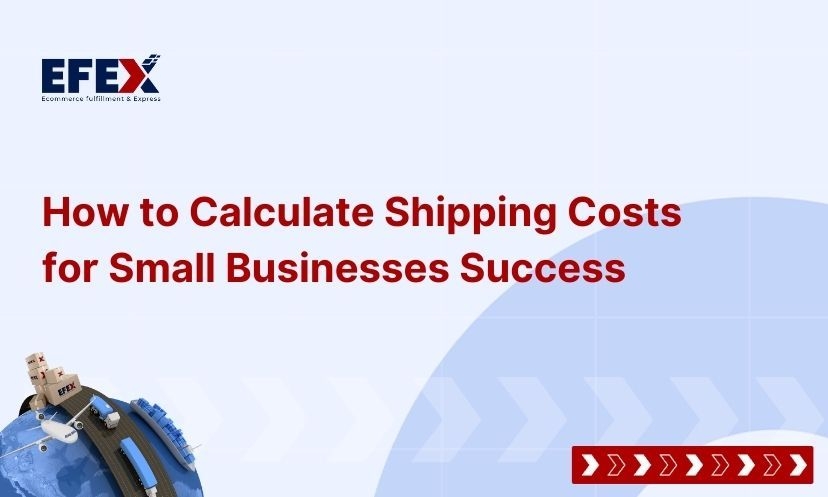
More Helpful Content
Calculating shipping costs is one of the most crucial aspects of running a small business, yet it often feels overwhelming. Whether you're just starting out or looking to streamline your shipping process, getting it right can make or break your profitability. But don’t worry — we've got you covered.
In this guide, we'll break down exactly how to calculate shipping costs for small businesses in a clear, step-by-step manner, so you can optimize your expenses and set fair, competitive shipping rates for your customers.
Here’s what we’ll cover:
By the end of this guide, you’ll have all the knowledge and tools needed to calculate shipping costs accurately, reduce unnecessary expenses, and boost your small business success. Let’s dive in!
Shipping is an integral part of any small business, directly impacting operations, costs, and the customer experience. Whether you're delivering locally or internationally, how you manage shipping can significantly affect your profitability and reputation.
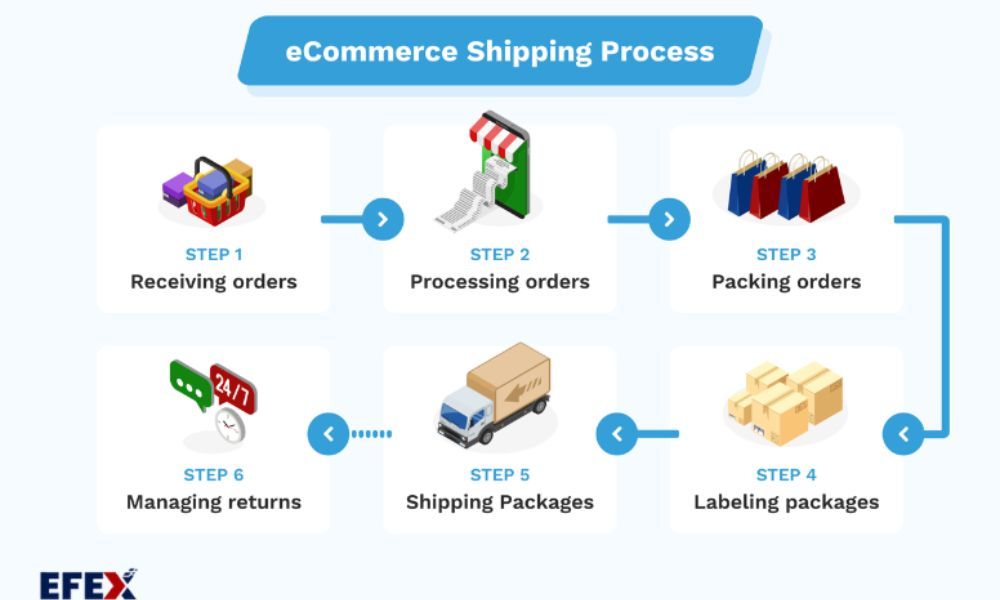
For small businesses, selecting the right shipping method is crucial. Shipping methods vary depending on factors like delivery distance, speed, and the size and weight of your packages. Understanding these methods is key to figuring out how to calculate shipping costs for small business.
Domestic ground shipping
Ground shipping is often the go-to choice for small businesses. It’s typically the most cost-effective option, especially for domestic deliveries. However, it can be slower compared to other methods, especially for long distances.
Despite its slower pace, ground shipping offers reliable tracking systems and no size limitations, making it an excellent choice for small businesses focused on keeping shipping costs low.
Air freight shipping
When speed is crucial, air freight is the answer. This method is ideal for getting goods across the country quickly. Air freight is reliable, as flights operate on tight schedules, ensuring timely delivery. However, it comes at a higher cost, and there are stricter size and weight limits.
For small businesses needing to meet tight delivery deadlines, air freight is a valuable, albeit more expensive, option. This shipping method is especially helpful for how much does shipping cost for a small business when fast turnaround times are a priority.
Sea freight shipping
For international deliveries, sea freight shipping is a cost-effective choice. It’s ideal for businesses that need to transport large quantities of goods at once, particularly heavy items.
While affordable, sea freight comes with its challenges. It can be slow, especially with long wait times at ports, and delays are common. However, it’s perfect for small businesses importing large volumes of inventory from overseas at a reasonable cost.
Choosing the Right Shipping Method

So, how do you decide which method is best for your business?
In the end, it all comes down to balancing cost with delivery speed. Customers expect reliable delivery times, and providing them with various shipping options can make a big difference in your business's success.
Calculating shipping costs isn't just about adding a fee to an order—it's a crucial part of your overall pricing strategy. If you don't get it right, shipping can eat up your profits and damage your reputation.
Shipping costs directly impact your product pricing and profit margins. Without accurate shipping calculations, you might end up with unrealistic prices or hidden fees that alienate customers.
For instance, in 2024, almost half of U.S. consumers abandoned online purchases during checkout due to additional costs, such as shipping, taxes, or fees. This means nearly half of your potential revenue is lost if shipping costs aren't transparent and well-calculated.
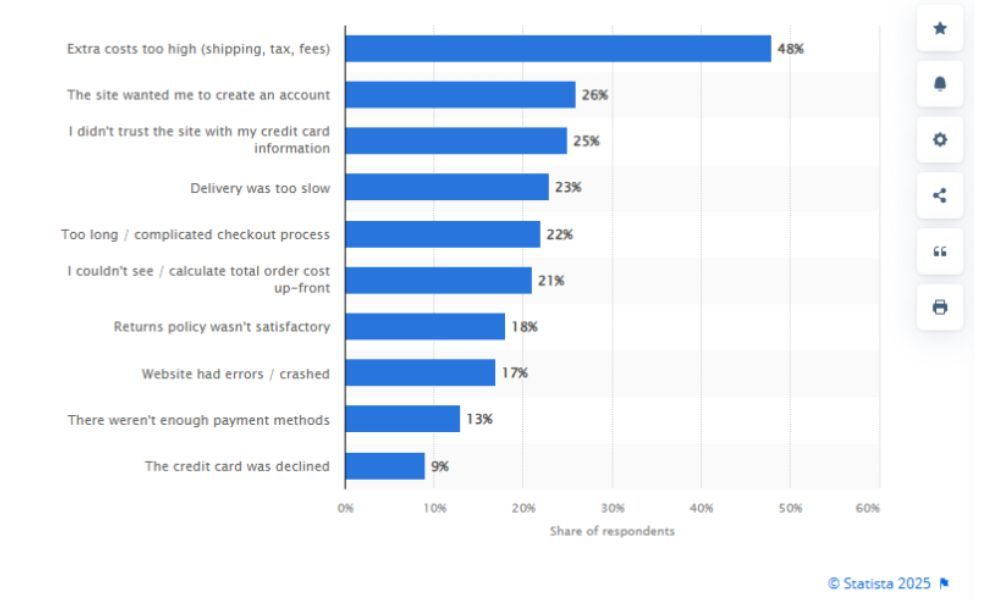
Knowing how to figure out shipping cost for small business helps you ensure that your prices cover all costs while still allowing for a healthy profit margin.
For example, let’s say your product costs $20, and you incur $8 in shipping fees, $2 for packaging, and $1.50 for payment processing. Your total costs for each sale are $31.50. To achieve a 50% profit margin, your ideal sales price should be $63. You can calculate it using the formula:
By accurately calculating your shipping costs, you can ensure that your products are priced to meet your margin goals, preventing unexpected losses.
Incorrect shipping cost calculations can lead to a variety of issues:
Shipping also plays a significant role in how to calculate shipping for small business by influencing customer purchasing decisions. If shipping costs are too high or unclear, customers are less likely to complete their purchase. A transparent and accurate shipping cost structure enhances customer trust and boosts conversions.
Want to maximize your profits? Actively look for shipping discounts from trusted carriers like DHL, USPS, UPS, and FedEx. These companies offer deals that can significantly lower your shipping costs, helping you keep more of your hard-earned revenue.
The bottom line: Calculating your shipping costs accurately isn't just about avoiding loss—it’s about making sure your pricing strategy is solid and your customers are happy.
When it comes to how to calculate shipping costs for small businesses, one of the first and most significant factors to consider is distance. The distance a package travels directly influences how much you’ll pay for shipping, especially for domestic and international shipments. Here's how it works:
Shipping carriers use zones to categorize distances between the origin and destination of a package. The further a package has to travel, the higher the shipping cost, as it falls into a higher shipping zone. This is true for both domestic and international shipments.
For example, in the U.S., carriers like USPS, UPS, and FedEx have established specific zones for domestic shipping. Here's a breakdown of U.S. shipping zones and their distances:
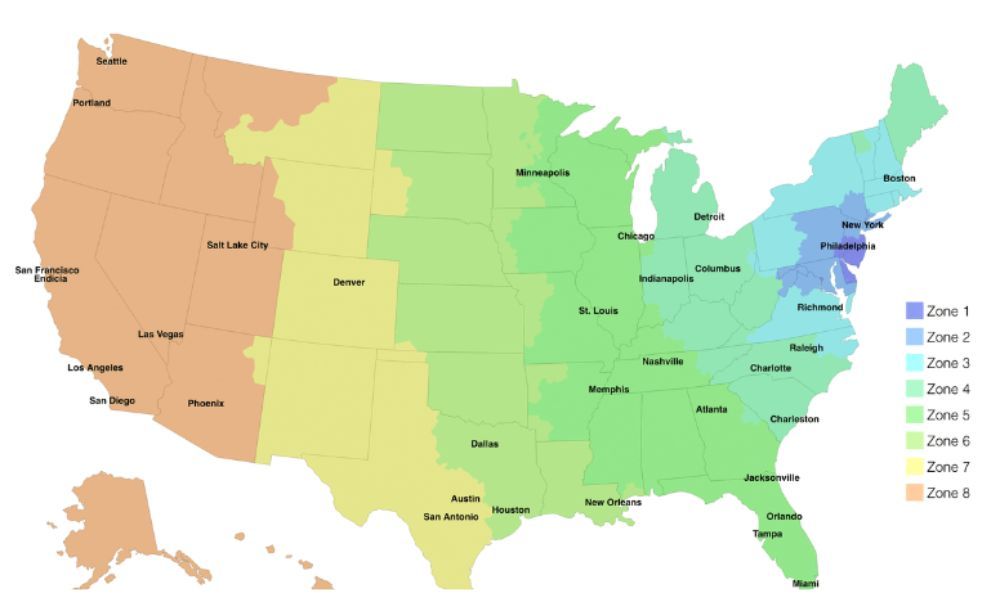
As the distance increases, the shipping costs rise due to the additional fuel, time, and resources required to transport the package.
How to calculate shipping cost for online business often involves looking up these zones based on the destination, which helps you determine the cost based on the zone your package will be sent to.
For international shipping, the zones become even more critical. International carriers consider the shipping route, customs, and additional handling fees when calculating the cost. You’ll need to account for factors such as customs duties and taxes, which can fluctuate depending on the destination country.
Understanding these zones and how they impact how to calculate shipping costs small business can help you forecast your shipping expenses more accurately, saving you from surprises when finalizing your shipping fees.
Want to cut down on your shipping expenses? Consider using shipping solutions that offer multi-carrier support to find the best deal based on distance and delivery requirements.
After considering distance, the next major factor in how to calculate shipping costs for small business is weight and dimensions. These two elements play a crucial role in determining shipping rates, especially when you're working with limited resources and need to manage costs effectively.
Dimensional Weight (DIM)
Carriers like USPS, UPS, and FedEx don’t just consider the actual weight of a package. They also factor in its dimensional weight (DIM), which measures the weight relative to the size of the package. Essentially, carriers want to ensure they’re charging you for the space your package occupies.
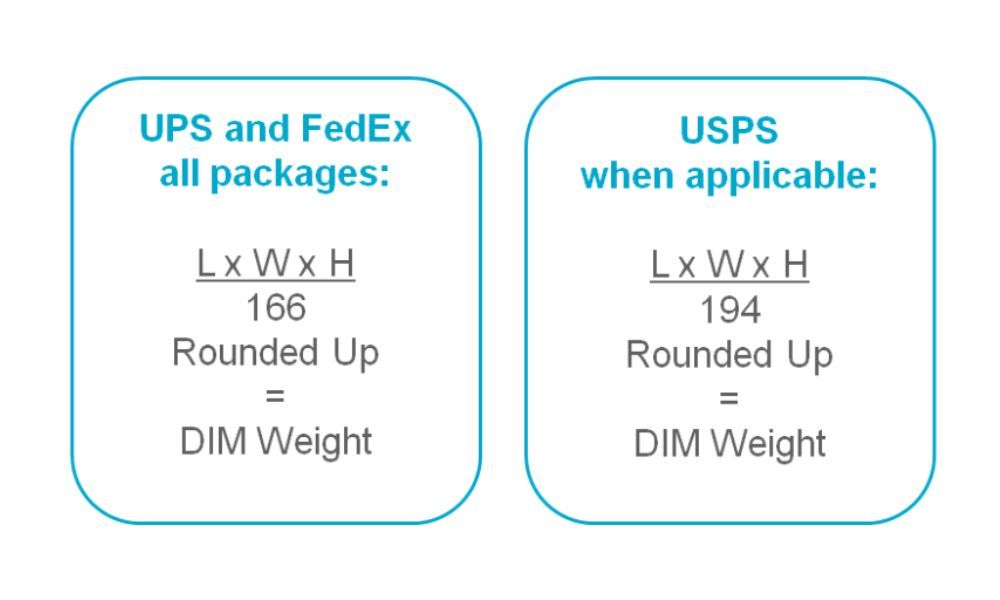
To calculate the DIM, use the formula: DIM = (Length x Width x Height) ÷ Dimensional Divisor
For example, USPS uses a divisor of 166 for Priority Mail, while UPS Ground uses a divisor of 139. So, if your package’s dimensions are large but the actual weight is light, you might still end up paying for the higher DIM weight.
Measuring and weighing products correctly
To avoid unexpected costs, always measure and weigh your products accurately. Here’s how:
If your package’s actual weight is higher than the DIM weight, most carriers will use the actual weight to calculate your shipping costs. Additionally, oversized packages often incur extra surcharges. For instance, USPS adds a $100 surcharge for packages exceeding their mailable size limit.
In eCommerce, getting these measurements right is key to controlling your shipping expenses. By knowing how to determine shipping costs for small businesses, you’ll be prepared to avoid hidden fees and manage your profits effectively.
Next up in our journey of how to calculate shipping costs for small business is the often-overlooked aspect of shipping insurance. Insurance plays a critical role when you're dealing with high-value goods or shipping to high-risk areas, ensuring that you’re covered in case of theft, damage, or loss during transit.
While most carriers, such as FedEx, UPS, and USPS, provide basic coverage of up to $100 for free, this may not be enough for expensive products. For instance, if you’re shipping a custom-designed laptop worth $1,200, you might want additional coverage.
The good news is that shipping insurance is relatively affordable. For an additional $1 to $3 for every $100 of value, you can safeguard your shipment, offering peace of mind for both you and your customers. This is a small price to pay compared to the potential loss of a high-ticket item.
When to add insurance?
Consider adding insurance when:
Insurance costs are typically low and can be added easily during the shipping process, either online or at the time of booking. Just keep in mind that this extra cost will affect your overall shipping price, which is an important factor to calculate in your how much does shipping cost for a small business breakdown.
By factoring in the cost of insurance, you're not just protecting your business but also enhancing customer trust, knowing that their valuable items are well taken care of during shipping.
When you’re figuring out how to calculate shipping for small businesses, speed is a crucial factor in the overall cost. The faster the delivery, the higher the price.
Carriers offer different shipping speeds, each with its own price tag. For instance, FedEx Ground takes around 1-5 days for delivery, while FedEx Express Freight promises quicker delivery within 1-3 days. The faster the service, the more you’ll pay for shipping.
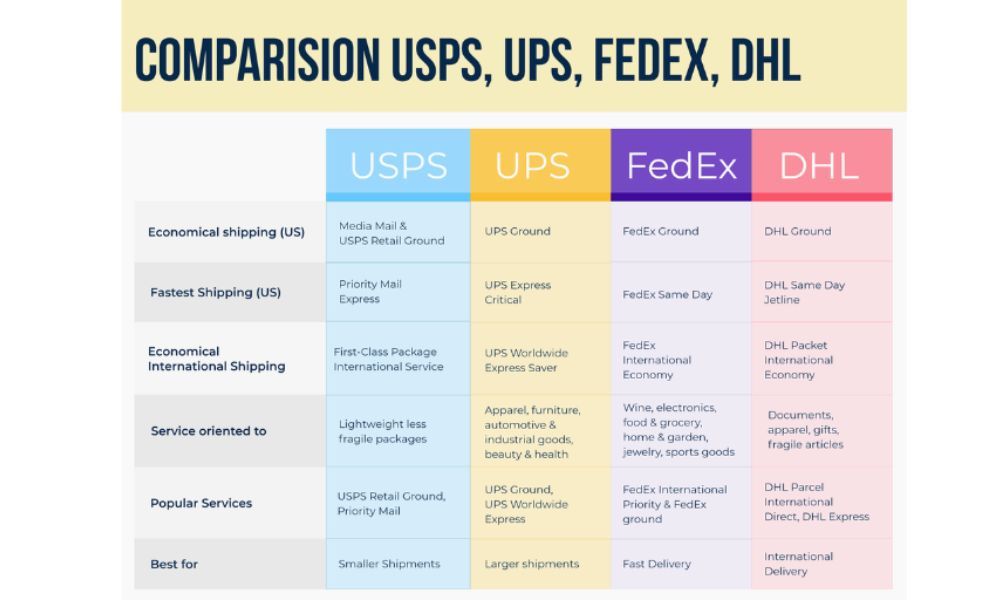
As a small business, you have the opportunity to offer customers a choice between standard and expedited shipping. Offering expedited options can be a great way to cater to customers who need their packages quickly—just keep in mind the extra cost associated with faster service.
Balancing Speed and Cost
One challenge is balancing delivery time with cost. Customers often expect quicker deliveries, especially in a world where same-day delivery is becoming more common. However, faster delivery options usually come with a higher price tag.
However, when delays occur, customers often hold the business responsible, even if the issue lies with the shipping provider.
According to a study, 52% of consumers blame the company they purchased from for late deliveries, while 48% blame the shipping service. This highlights the importance of choosing a reliable carrier and ensuring that you can deliver on promised timelines.
To strike the right balance:
In this way, you can keep shipping costs manageable while still meeting customer expectations.
One important aspect to consider when determining how to calculate shipping costs for small business is packaging. While proper packaging ensures your products arrive safely, it can also impact your overall shipping costs.

Carriers charge based on weight and dimensions, so the larger and heavier the package, the more it will cost to ship. For example, if you use a large box for a small product, you’ll end up paying for extra unused space, increasing the shipping price.
Key Packaging Factors:
Cost-Saving Packaging Tips:
The goal is to balance safe, professional packaging with keeping shipping costs in check. Smart packaging choices will help you save money without compromising the protection of your products.
Setting the right shipping charges for customers is a delicate balance. Charge too little, and you may lose profit. Charge too much, and your customers might abandon their carts.
Whether you're learning how to calculate shipping costs USPS small business or exploring other carrier options, understanding customer expectations and costs is key.
Offering free shipping is one of the most popular strategies to attract customers. However, it comes with its own set of advantages and challenges.
Pros of free shipping:
Cons of free shipping:
How to make free shipping work:
Standard shipping is a go-to option for small businesses looking to balance affordability with reliable delivery times. It’s an excellent middle ground, offering reasonable rates while meeting most customers' expectations for timely delivery. Let’s dive into how to calculate shipping costs for small businesses when using standard shipping and how to communicate delivery timelines effectively.
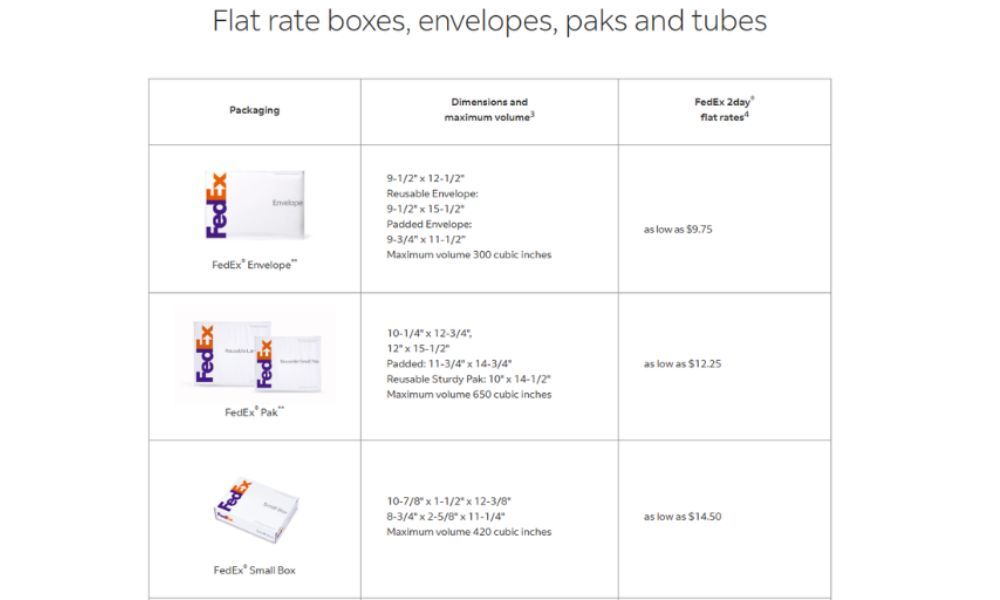
Setting standard shipping rates:
To establish fair and accurate rates, consider these factors:
For small businesses, carriers like USPS offer budget-friendly options, including flat-rate boxes. To figure out how much does shipping cost for a small business, calculate the average weight and distance of your packages to set a baseline rate.
Communicating delivery timelines:
Transparency is critical to building trust. Here’s how to set clear expectations:
Pro Tip: Bundle packaging and shipping into a single rate for simplicity. For example, instead of breaking down costs, display a flat standard shipping fee.
Standard shipping keeps things straightforward for both businesses and customers. Next, we’ll explore expedited shipping and how to price it for those needing a quicker delivery option.
In today’s fast-paced world, customers often expect faster delivery options, even for non-essential items. Offering expedited shipping or same-day delivery can make your small business stand out, but pricing it right is essential. Let’s look at how to figure out shipping cost for small business when offering faster delivery and how to determine if it’s a viable option.
Pricing expedited shipping
Expedited shipping is typically pricier because of the priority handling it requires. To set appropriate rates, consider:
Offer expedited shipping as an optional upgrade with clearly communicated costs. For example, “Need it sooner? Add expedited shipping for just $10.” This transparency ensures customers know exactly what they’re paying for.
Calculating costs and viability
To determine how to calculate shipping for small business while providing expedited options:
Pro Tip: Consider offering expedited shipping as part of a loyalty program or for orders over a specific amount. For instance, “Free expedited shipping on orders above $100!” This can drive higher order values while controlling costs.

Shipping logistics can be a significant pain point for small businesses, but EFEX Fulfillment is here to change that. If you’re wondering how to calculate shipping cost for online business without the hassle, EFEX provides a streamlined solution that simplifies everything from order fulfillment to delivery.
What is EFEX fulfillment?
EFEX Fulfillment is a comprehensive logistics service tailored to help small businesses optimize their shipping processes. By leveraging technology and efficient operations, EFEX helps businesses manage inventory, calculate shipping costs, and ensure timely delivery. With EFEX, you can focus on growing your business while leaving the logistics to the experts.
How does EFEX help small businesses?
Seamless Integration and End-to-End Fulfillment:
Why is EFEX perfect for small businesses?
For small businesses juggling multiple roles, EFEX simplifies logistics and levels the playing field against larger competitors. With its robust fulfillment solutions, EFEX turns logistics into your competitive advantage. From inventory management to optimized shipping, let EFEX handle the heavy lifting while you focus on scaling your business.
To simplify your logistics and shipping needs, EFEX Fulfillment is here to help. With our expert services, you can lower costs, enhance customer satisfaction, and focus on scaling your business.
If you’re ready to take the next step, visit our homepage for more information. Have questions? Contact us through our contact page or connect with us on our Facebook page for updates, tips, and exclusive content.
For more insights into streamlining your operations, don’t miss our blog on Top 15 Order Fulfillment Software For Ecommerce Business. Learn how the right software can revolutionize your eCommerce logistics!
With EFEX by your side, you can confidently master the art of shipping, leaving the logistics to us while you focus on delighting your customers.


